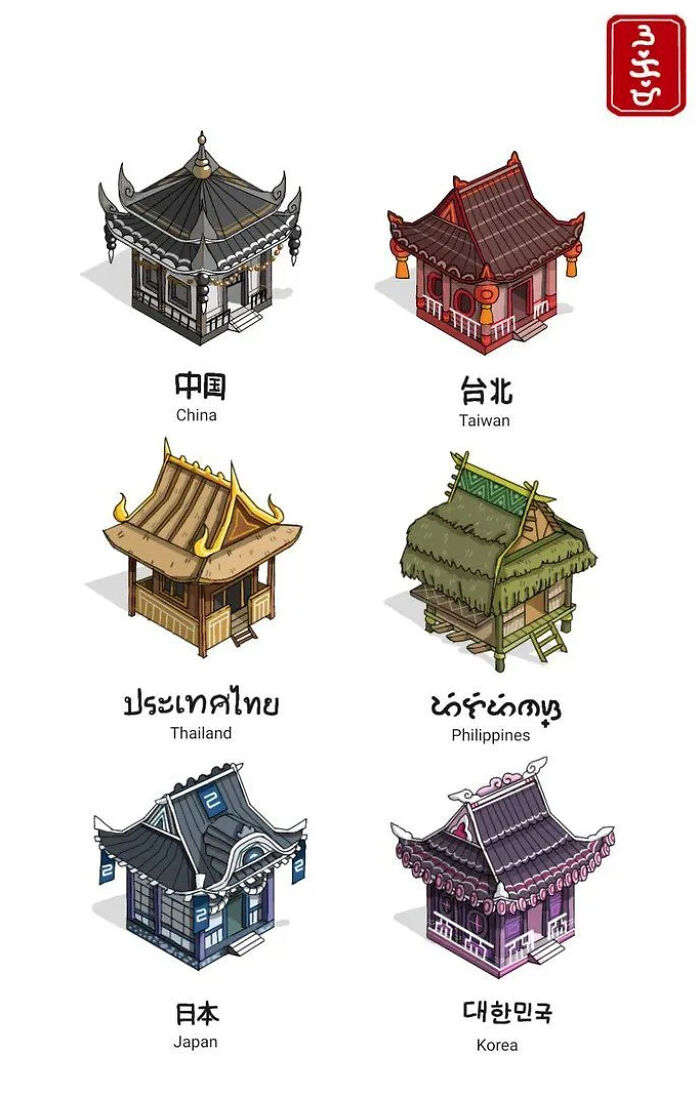
If you want to learn about Asian architecture, it’s best to go straight to the source. After all, the different regions of Asia have very distinct cultures and architectural styles. Here’s a crash course on what you should expect when traveling through China, Thailand, Japan and beyond:
China
Chinese architecture is a style of architecture that has taken shape in East Asia over many centuries. The structural principles of Chinese architecture have remained largely unchanged, the main changes being only the decorative details. Chinese architecture has been admired by neighboring Asian countries and Western countries for its unique styles and rich history. Chinese architecture also includes some elements of classical Greek architecture, making it a blend of Eastern and Western styles. The first examples of Chinese architecture date back 5,000 years ago when early settlers built simple homes out of mud bricks on raised platforms with thatched roofs
Thailand
Thai architecture is a reflection of the country’s cultural and religious history. The architecture of Thailand has evolved over time to reflect the country’s cultural and religious history.
Japan
Japanese architecture is known for its simplicity and modesty. Japanese buildings are often designed with an emphasis on natural materials, like wood or stone, which can be found in abundance in the country’s mountainous regions. The simplicity of these structures is also a reflection of their occupants’ lifestyle–the Japanese people prefer to live simply so that they might enjoy the beauty of nature around them more fully. Japanese architecture has a strong emphasis on natural materials; however, this doesn’t mean that all buildings must be made out of wood or stone! In fact, many modern-day constructions incorporate steel frames with glass facades as well as concrete blocks filled with insulation material so that they have better insulation values than traditional houses would have had at one point in time (before we knew about such things). These types of buildings were developed because earthquakes were becoming increasingly common throughout Japan’s history due to its location along fault lines between tectonic plates called subduction zones where one plate moves under another causing large amounts energy release when rocks break apart from each other which causes tremors throughout nearby landmasses every few decades depending upon how quickly one plate moves underneath another one thus creating seismic activity like earthquakes which happen frequently enough for us humans living here today but thankfully don’t occur often enough for us humans living here today
Korea
Korean architecture is a mix of cultural, historical and geographical factors. The country’s geography is mountainous with many rivers running through it. It also has four distinct seasons which affects how Korean architecture looks and functions. The history of Korea dates back thousands of years ago when people lived in small villages that were mostly located near water sources such as rivers or lakes because these areas are easier to live in compared with other parts of their country due to their climate conditions during those periods (i.e., hot summers).
Philippines
Filipino architecture is a mix of Spanish, American and Asian architecture. The Philippines is a tropical country so there are many open spaces and big windows. It also has earthquakes that can shake buildings down, which is why buildings are built on stilts so they can stay safe from earthquakes.
Taiwan
Taiwanese architecture is a mixture of Han Chinese and Taiwanese aborigines. The architecture of Taiwan has a lot of influences from the Dutch, Spanish and Japanese cultures as well. The most famous example of Taiwanese architecture is the Taipei 101 building, which is also the tallest building in Asia with 101 floors. This was built in 2004 and it’s located in downtown Taipei city. It has an open-air observatory on its top floor where visitors can enjoy amazing views over all of Taipei city!
Asian architecture is a beautiful and unique cultural history that has a lot to offer. Whether you’re interested in learning about the different styles of houses, temples or palaces found throughout Asia, there are plenty of resources available online for you to explore!
